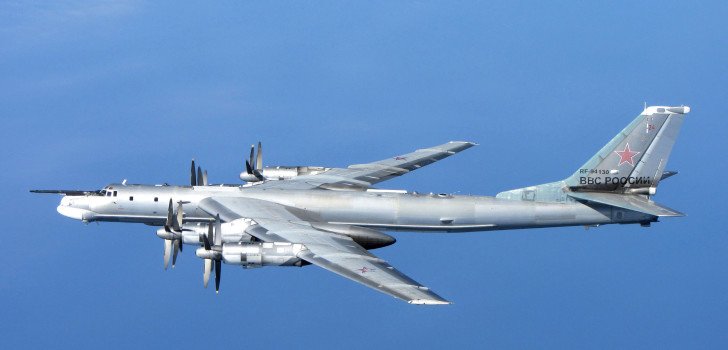Russian heavy bombers capable of delivering nuclear warheads, flew into a U.S. air defense zone near Alaska last week, it was reported Friday.
Two Tu-95 Bear H bombers reportedly flew into the airspace on April 22 – a sign, officials said, that Russia has begun its long-range aviation spring training cycle.
U.S. defense officials would not confirm the incursion but did tell the Washington Free Beacon that no fighter jets were dispatched near Alaska last week to monitor any invading aircraft, which would typically be standard procedure.
Most analysts see the flights of Russian military aircraft into U.S. air space as saber rattling by Moscow, which has raised international tensions recently with a steady stream of anti-U.S. rhetoric and its invasion of Ukraine last year.
If the reports are true, the Russian intrusion would mark the first of its kind in U.S. or Canadian zones this year. Similar incidents have been recorded in the past. Just last year alone, U.S. fighter jets intercepted Russian aircraft at least six times.
In September, U.S. warplanes intercepted six Russian military aircraft – two refueling tankers, two Mig-31 fighter jets and two long-range bombers – in the air defense identification zone (ADIZ) west of the Alaskan coast.
In June of last year, four Russian bombers flew within 50 miles of the California coast.
An intrusion into the ADIZ, however, isn’t a violation of international law since the zones are not considered sovereign airspace. Aircraft flying in the zone, however, are required to identify themselves and their location.
More flights into the ADIZ near our coast are expected, a defense official reportedly said off the record.
The purpose of the flights near the U.S. isn’t obvious, but analysts believe they are the flexing of Moscow’s military might.
“They’re obviously messaging us,” Air Force Col. Frank Flores, who is in charge of 14 radar stations along the Alaskan coast, said earlier this month. “We still don’t know their intent.”
Stay Connected